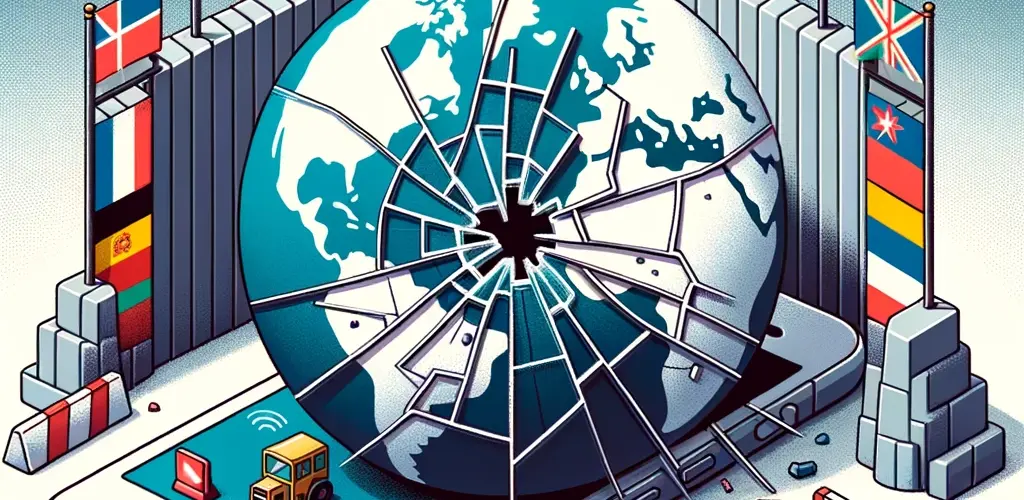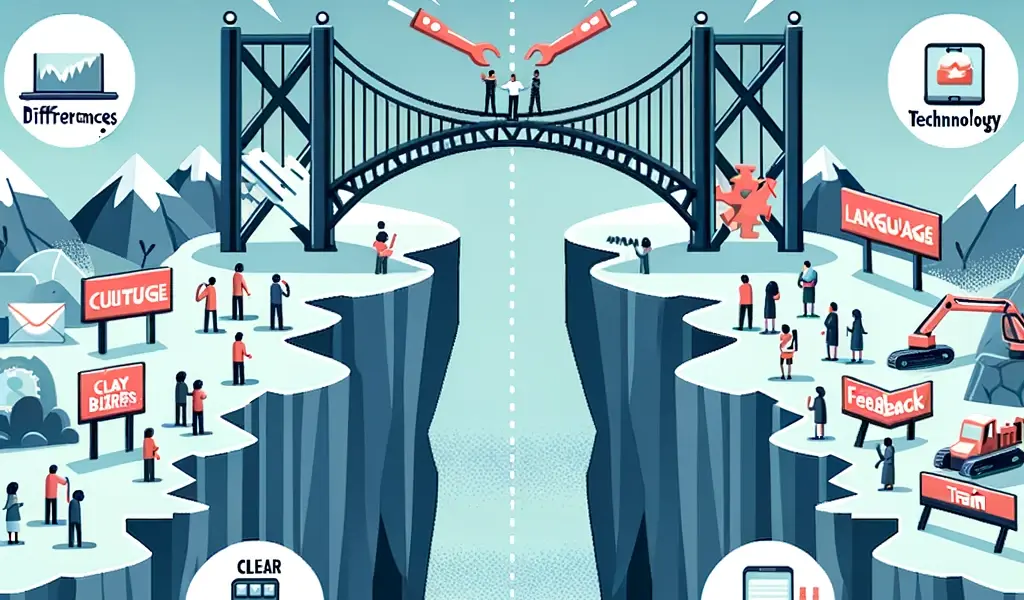Systematic Barriers in Communication
Have you ever left a meeting or conversation feeling frustrated, confused, or simply unheard? You’re not alone. Many people experience misunderstandings at work, at home, and in social settings every single day. But what causes these breakdowns? Often, the answer lies not in our words or intentions, but in the systems around us. These hidden obstacles—known as systematic barriers—quietly shape how information is shared, received, and understood.
Systematic barriers can be found everywhere, from large corporations to small teams, and from classrooms to family life. They may be built into company policies, reinforced by cultural norms, or created by new technology. When left unchecked, these barriers stop ideas from flowing, silence important voices, and slow down progress. The good news is that with a bit of awareness and a willingness to change, anyone can start breaking down these barriers to create more open and productive conversations.
Contents
What Are Systematic Barriers in Communication?
Systematic barriers are obstacles built into the structure of organizations, teams, or even society itself. Unlike personal barriers, which depend on individual skills or attitudes, systematic barriers are woven into policies, hierarchies, technology, and culture. They don’t just affect one person—they shape how whole groups interact.
Imagine an organization where only managers get to make decisions, while frontline staff feel their ideas aren’t welcome. Or think of a global team using advanced software that some employees can’t access due to slow internet or lack of training. These examples show how policies and systems can limit participation, create confusion, and make it harder to get things done.
A recent report from Harvard Business Review found that systematic barriers are among the biggest reasons why good ideas get lost, employees disengage, and projects fall behind. Addressing these challenges starts with understanding what they look like in real life.

Common Types of Systematic Barriers
Systematic barriers take many forms. Some are easy to spot; others work quietly in the background. Let’s take a closer look at the most common types:
Hierarchical Structures
When communication follows a strict top-down path, those at the bottom may feel hesitant to share new ideas or concerns. Fear of criticism or being ignored can keep valuable feedback from reaching decision-makers. In these settings, innovation often slows down because people don’t feel comfortable speaking up.
Rigid Organizational Policies
Formal policies are important for consistency, but when rules are too strict, they can block creativity and fast decision-making. Long approval chains, complicated reporting lines, or overly formal language make it harder for teams to respond to change. Instead of quick conversations, people wait for permission or worry about saying the wrong thing.
Cultural Differences
In today’s global workplace, teams often bring together people from many backgrounds. Each culture has its own ways of expressing respect, disagreement, or enthusiasm. Sometimes, direct communication is valued; other times, subtle hints are the norm. If team members don’t understand these differences, misinterpretations and conflict are more likely.
Research from McKinsey & Company shows that when organizations pay attention to cultural barriers, they build stronger teams and avoid costly mistakes.
Language Barriers
Even when everyone speaks the same language, misunderstandings happen. Add in second languages or technical jargon, and the risk of confusion goes up. People may hold back questions, avoid complex conversations, or misread instructions—all of which can lead to mistakes.
Technological Gaps
Not everyone has the same access to digital tools or the skills to use them. Some workers may struggle with new platforms, apps, or systems, especially if training is limited. In remote teams, slow internet or lack of devices can leave certain members out of the loop. According to Society for Human Resource Management (SHRM), technology gaps are now one of the leading sources of communication breakdown in modern organizations.
How Systematic Barriers Affect Relationships and Teamwork
These obstacles do more than just slow down communication. They affect trust, collaboration, and even how people feel about their work or community. Here’s how:
On Personal Relationships
Systematic barriers can show up at home or among friends. Maybe an older family member resists using messaging apps, causing missed updates. Or perhaps unwritten “family rules” keep certain topics off-limits, so important issues never get discussed. When people feel blocked by these invisible walls, frustration grows, and misunderstandings pile up.
On the Workplace
In companies, systematic barriers can stall growth and creativity. Teams miss out on fresh perspectives when employees at lower levels are discouraged from speaking. Project deadlines slip when tech issues prevent fast updates or easy collaboration. When cultural or language gaps go unaddressed, teams waste time clarifying details instead of moving forward together.
Real-Life Example
Consider a multinational team where employees from Japan and the US work together. Japanese members might hesitate to challenge group decisions to preserve harmony, while their American colleagues expect open debate. Without open discussion about these cultural norms, projects slow down, and confusion spreads.
Impact of Systematic Barriers
Systematic barriers significantly influence various aspects of life. They affect both personal relationships and workplace dynamics, impeding effective communication.
On Personal Relationships
Systematic barriers often lead to misunderstandings in personal relationships. Misinterpretations can arise when individuals from different cultural backgrounds communicate, as varying norms and values influence interactions. Language differences further complicate this, often resulting in a lack of clarity and connection.
For example, a person whose first language is not English may struggle to express emotions effectively, leading to emotional disconnects and strained relationships. Emotional gestures and cultural nuances might be missed, causing friction.
On Workplace Dynamics
Systematic barriers considerably impact workplace dynamics, creating communication bottlenecks. Hierarchical structures restrict upward communication, limiting employees’ input and innovation. Cultural differences within teams may cause miscommunications if diverse interpersonal styles clash. For instance, direct communication may be valued in one culture but seen as rude in another, leading to potential conflicts.
Technological barriers also widen gaps. Some employees lack access to tools essential for efficient collaboration, hindering productivity. Missed information can stifle decision-making and slow project advancement, affecting overall organizational performance.
Strategies to Break Down Systematic Barriers
The good news? You don’t need a total overhaul to start seeing results. Small, focused actions can create big changes over time. Here are proven strategies for tackling systematic barriers:
Build Cultural Competence
Encourage open discussions about culture, values, and expectations. Training sessions or workshops can help team members understand different styles and avoid common pitfalls. Encourage managers to ask, “How can we make communication easier for everyone?”
Simplify Language
Avoid jargon and complex terms, especially in written messages or meetings. Offer translation or language support where needed. Encourage people to ask for clarification and celebrate questions as a sign of engagement, not confusion.
Make sure everyone has access to the right tools and the know-how to use them. Provide regular training, troubleshoot issues quickly, and keep communication channels open for feedback. Check in with remote or rural team members to ensure they aren’t left behind.
Open Up the Organization
Rethink strict hierarchies. Create spaces for employees at all levels to share ideas, offer feedback, and contribute to decisions. Consider “open-door” policies, suggestion boxes, or regular all-hands meetings where questions and suggestions are welcomed.
Review Policies Regularly
Company rules should support, not hinder, effective communication. Review policies to see if they create unnecessary hurdles. Make adjustments when feedback shows that rules are slowing things down or causing confusion.
Use Case Studies for Learning
Share real examples with your team to highlight the effects of systematic barriers—and how they can be overcome. Storytelling makes these issues easier to understand and keeps the topic relevant.
Quick Reference Checklist: Reducing Systematic Barriers
- Encourage feedback at every level
- Provide training in cultural awareness
- Offer language support and simple communication tools
- Invest in technology access and training
- Regularly review and adjust organizational policies
- Celebrate successes when barriers are overcome
Conclusion
Systematic barriers are often hidden, but their effects are felt every day—in families, teams, and organizations. Tackling these obstacles means taking a closer look at the systems and habits shaping how we interact. Whether you’re a leader, a team member, or simply someone who wants better conversations, the first step is awareness.
Start by looking at your own workplace or group. Where are voices being lost? Which tools or policies slow things down? What simple changes could help everyone share ideas more freely? Remember, lasting improvements come from small, steady steps. Open minds, honest feedback, and a willingness to adapt can help break down even the most stubborn barriers.
What is the difference between systematic and personal barriers?
Systematic barriers come from structures, rules, or technology that shape how groups communicate. Personal barriers are about individual attitudes, fears, or skills.
Conduct regular surveys, hold anonymous feedback sessions, and encourage open discussions about challenges. Look for patterns in missed deadlines, repeated confusion, or staff disengagement.
Are technological barriers still a problem today?
Yes! Not everyone has equal access to digital tools or training. Fast-moving tech changes mean some team members get left behind. Ongoing support and training help everyone stay connected.
How can leaders create more open communication?
Invite feedback from every level, reward new ideas, and keep communication policies flexible. Offer different ways for people to contribute, such as meetings, digital tools, or written suggestions.



